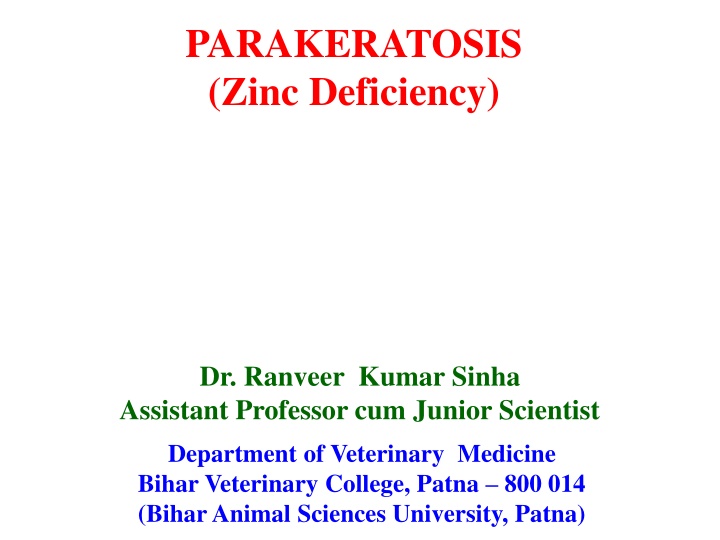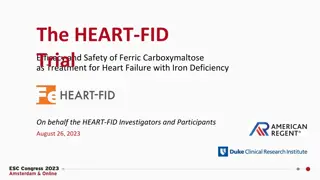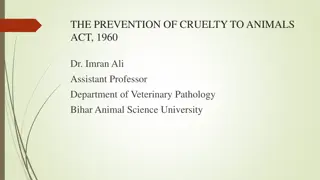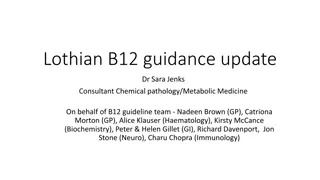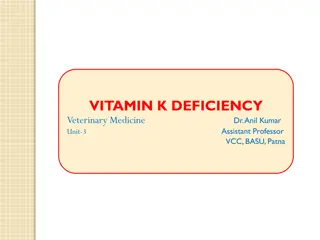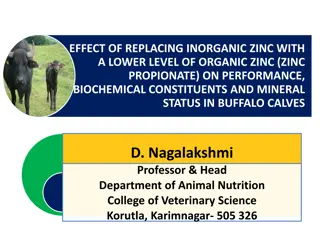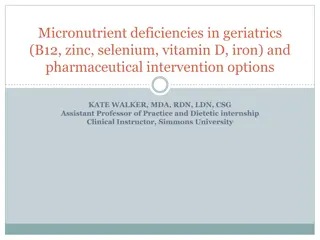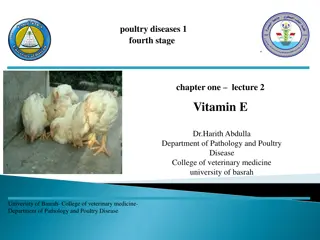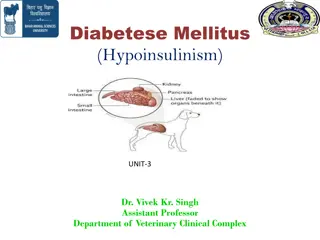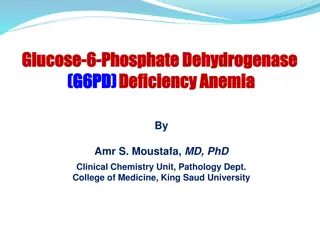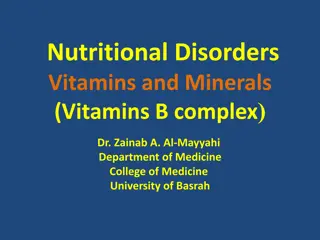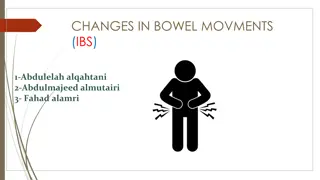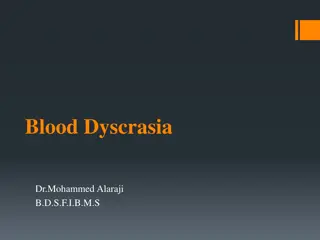Zinc Deficiency in Animals: Symptoms, Etiology, and Management
Skin lesions, reduced growth rate, and skeletal disorders are common signs of zinc deficiency in animals. It affects keratogenesis, reproductive health, and enzyme functions. Learn about the causes, symptoms, and pathogenesis of parakeratosis dermatosis in livestock.
Download Presentation

Please find below an Image/Link to download the presentation.
The content on the website is provided AS IS for your information and personal use only. It may not be sold, licensed, or shared on other websites without obtaining consent from the author.If you encounter any issues during the download, it is possible that the publisher has removed the file from their server.
You are allowed to download the files provided on this website for personal or commercial use, subject to the condition that they are used lawfully. All files are the property of their respective owners.
The content on the website is provided AS IS for your information and personal use only. It may not be sold, licensed, or shared on other websites without obtaining consent from the author.
E N D
Presentation Transcript
PARAKERATOSIS (Zinc Deficiency) Dr. Ranveer Kumar Sinha Assistant Professor cum Junior Scientist Department of Veterinary Medicine Bihar Veterinary College, Patna 800 014 (Bihar Animal Sciences University, Patna)
INTRODUCTION Skin, hair & wool are rich in Zn content Def. of Zn produces:- 1. Retarted growth:- reduced appetite & poor food utilization 2. Skeletal disorders:- Disturbed bone growth & remain fragile. Deformity due to decreased osteoblastic activity. Also produces stiffness of joint & lesions around the hoofs.
INTRODUCTION 3. Abnormal keratogenesis: Produces rough, dry, scaly hair coats & alopecia. Parakeratosis in pig(imperfect keratinisation of epithelial cell) Alopecia & general dermatitis around the head & neck is observed in cattle. 4. Reproductive disorder: Delay in sexual maturity due to Zn def. Bull & cow remain infertile.
ETIOLOGY is Parakeratosis dermatosis usually observed in 2- to 4- month-old swine. The deficiency is usually caused by feeding Excessive calcium; excessive phytic acid (sometimes present in soybean protein) or a low concentration of essential fatty acids. Enteric pathogens or changes in intestinal flora can adversely absorption. a zinc-responsive influence zinc
PATHOGENESIS Zn is component of certain enzyme like carbonic anhydrase removal of Co2. Alkaline phosphatase required for phosphorylation, metabolism & lactic dehydrogenase for the interconversion of pyruvic acid & lactic acid required for concerning lipid
SYMPTOMS/SIGNS Skin lesions and reduced growth rate. Reddened macules and papules on the ventrolateral abdomen and medial surface of the thighs The lesions are slowly covered by thick, roughened scales and crusts. More obvious lesions soon become apparent on the lower legs and on the dorsum. Lesions sometimes can be seen around the eyes, ears, snout and tail and eventually may become generalized. Skin are hyperkeratotic and there may be fissuring of the epidermis with secondary infection of the fissures.
DIAGNOSIS Clinical finding History of diet Estimation of Zn level(N.20-120 mg/dl) Reduced alkaline phosphatase & Carbonic anhydrase level in serum
DIFFERENTIAL DIAGNOSIS Differentiated from sarcoptic mange Parakeratosis is non pruritic whereas sarcoptic mange is pruritic. Pigs with Parakeratosis will recover if excessive calcium is removed from the ration and it is properly supplemented with zinc.
TREATMENT Ruminant:-2 gm Zinc sulphate orally for a week Pig:- 2-4mg/kg b.wt.orally Dog:-100-200 mg Zinc sulphate
THANK YOU FOR LISTENING
